Install Yeastar P-Series Software Edition on Hyper-V using Debian ISO
You can install Yeastar P-Series Software Edition on Debian 12 in Hyper-V, during which you can manually partition disk according to your needs.
Prerequisites
- Check if the version of Hyper-V is 10.0.17134.1 or later.
- Download the Debian ISO of Yeastar P-Series Software Edition.
Procedure
Step 1. Enable Hyper-V on your PC
- On the desktop, right click
 and click Apps and
Features.
and click Apps and
Features. - On the right of Settings page, click
Programs and Features.
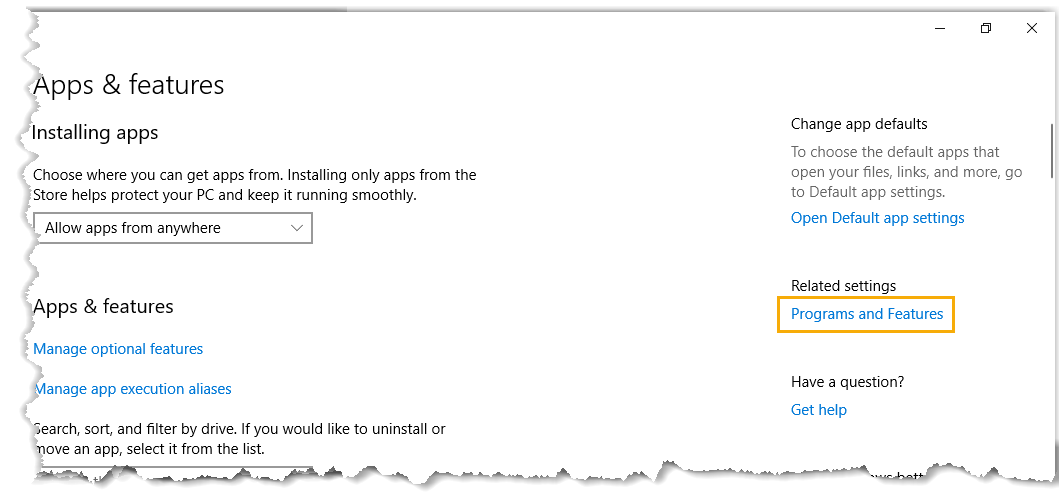
- On the left navigation bar, click Turn Windows Features on or off.
- In the pop-up window, select Hyper-V and click
OK.
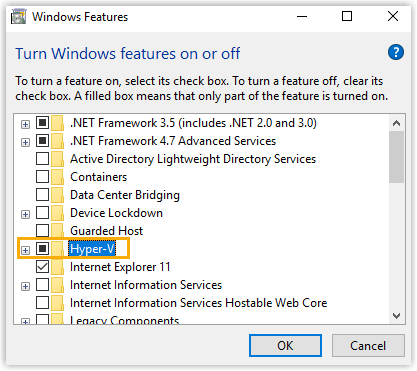
- Restart your computer after the installation is completed.
Step 2. Create a virtual switch
- Create a virtual switch on a computer with single NIC
- Create two virtual switches on a computer with dual NIC
- Create a virtual switch on a computer with single NIC
-
- On your desktop, go to .
- On Hyper-V Manager, click to create a virtual switch.
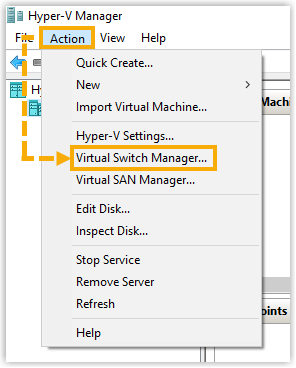
- Create a virtual switch.
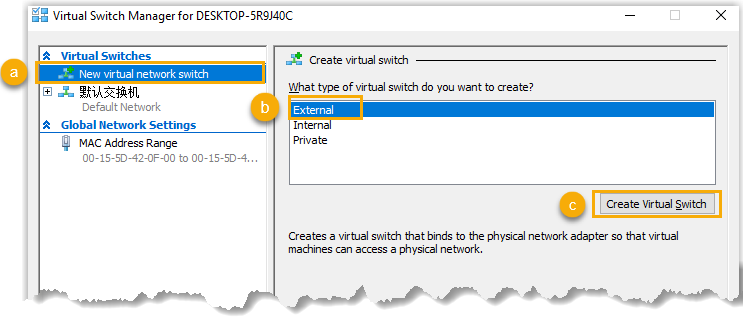
- Click New virtual network switch.
- In the What type of virtual switch do you want to create? section, select External.
- Click Create Virtual Switch.
- Set up the virtual switch.
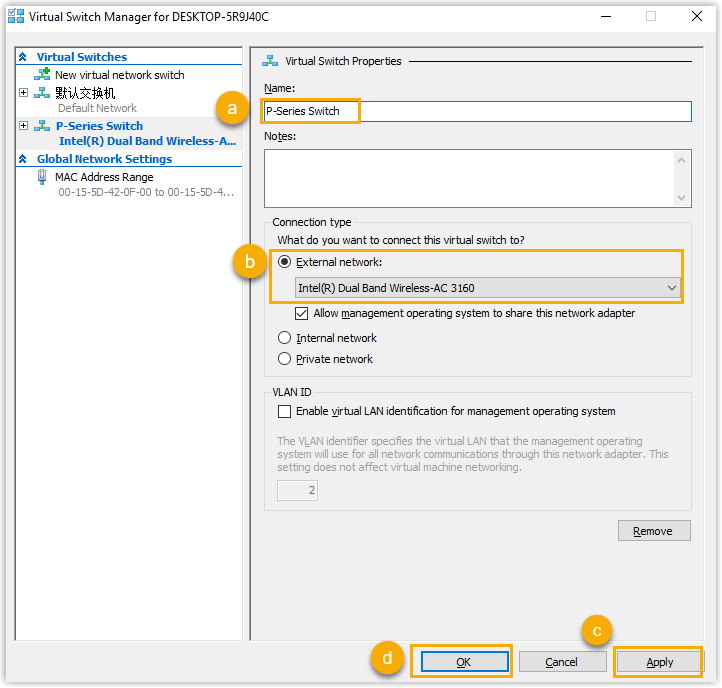
- In the Name field, enter a name to help you identify the virtual switch.
- In the Connection
type section, select
External network, and
select the physical network card to be paired with
the virtual switch.Note: The network card must be the one that is physically connected to the network.
- Click Apply and Yes to create the virtual switch.
- Click OK to close the Virtual Switch Manager window.
- Create two virtual switches on a computer with dual NIC
-
- On your desktop, go to .
- On Hyper-V Manager, click to create a virtual switch.

- Create a virtual switch.

- Click New virtual network switch.
- In the What type of virtual switch do you want to create? section, select External.
- Click Create Virtual Switch.
- Set up the virtual switch.
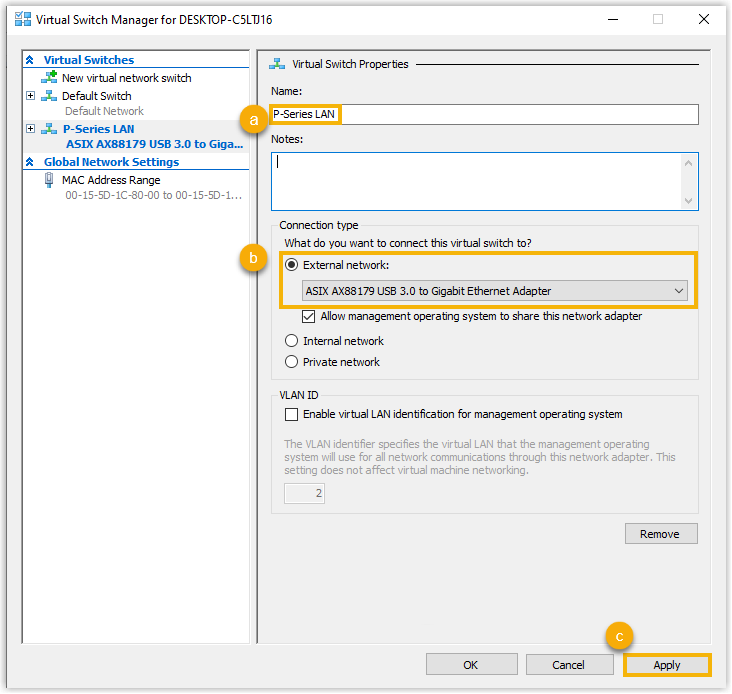
- In the Name field, enter a name to help you identify the virtual switch.
- In the Connection
type section, select
External network, and
select the physical network card to be paired with
the virtual switch.Note: The network card must be the one that is physically connected to the network.
- Click Apply and Yes to create the virtual switch.
- Repeat Step 3 and Step 4 to create another virtual switch, and select
the other physical network card.

Step 3. Create a virtual machine
- On Hyper-V Manager, go to .
- Review the Before You Begin content and click Next.
- Specify a name to help you identify the virtual machine, choose a location
to store configuration files of the virtual machine, and click
Next.

- Select a generation for the machine and click Next.
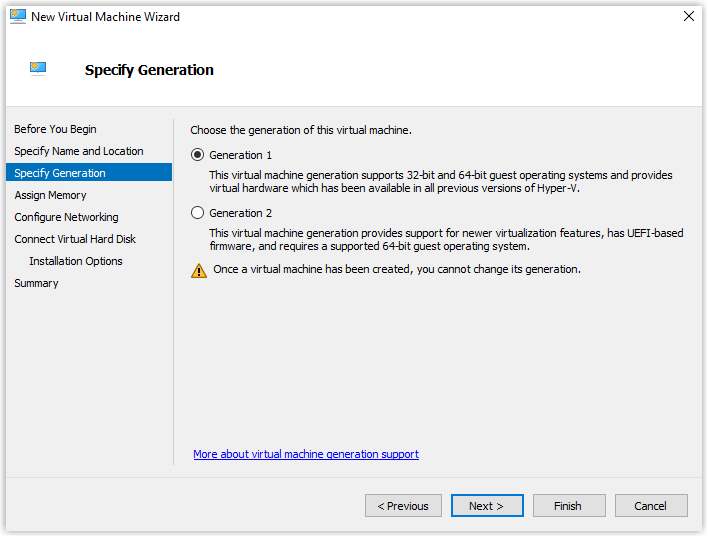
- Set the Startup Memory, select the checkbox of Use Dynamic Memory
for this virtual machine, and click Next.
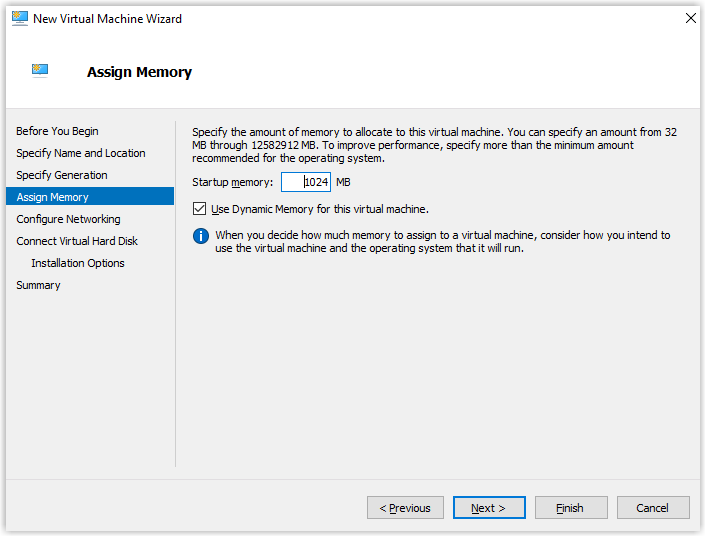
- In the drop-down list of Connection, select the
virtual switch created for the virtual machine, and click Next.Note: If you computer has dual NIC, you just select either one of the virtual switches that you have created, as you will need to add another network adapter for the other virtual switch later.
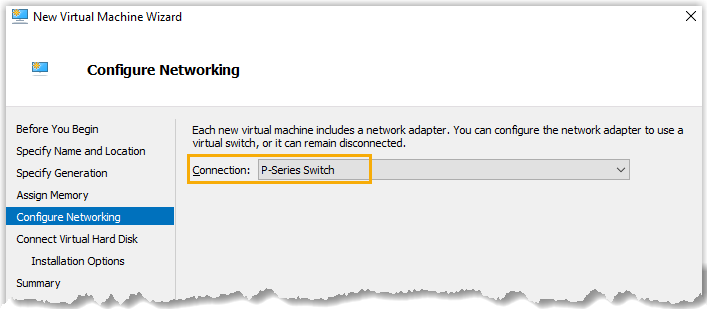
- Specify a name for the virtual hard disk, select a location, specify a size,
and click Next.
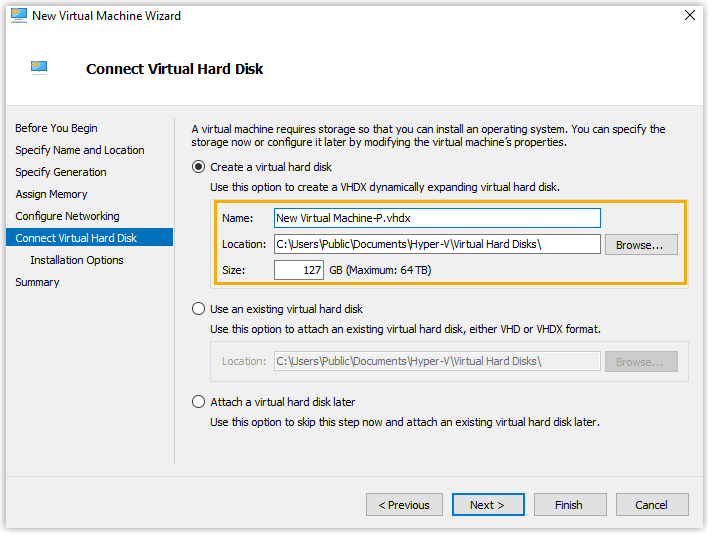
- Select Install an operating system from a bootable CD/DVD-ROM, select
an .iso file, and then click Finish.
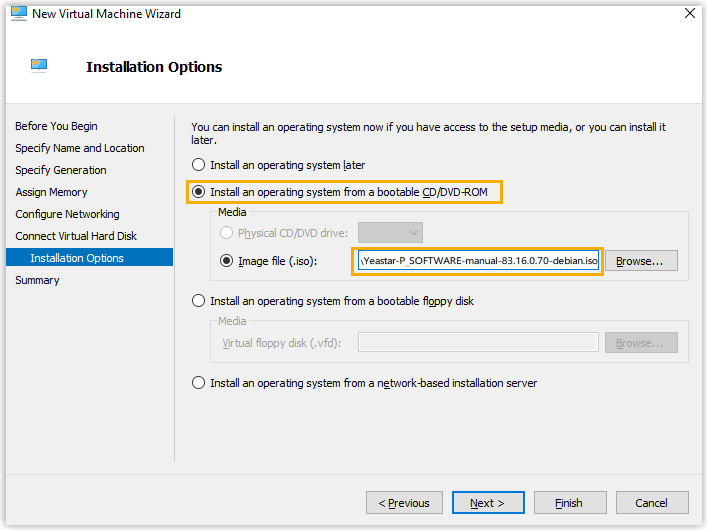
The virtual machine is created and displayed on the virtual machine list.
- Right click the virtual machine, then click Settings
to check and ensure that there is only one hard disk on the virtual machine,
or an installation error may occur.
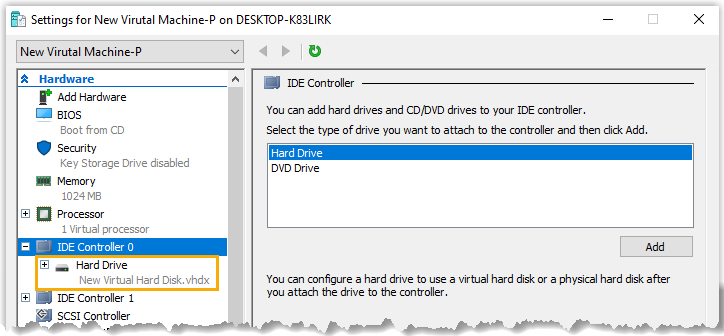
- If your computer has dual NIC, you need to add another network adapter for
the other virtual switch.
- Click Add Hardware, select Network
Adapter, then click
Add.
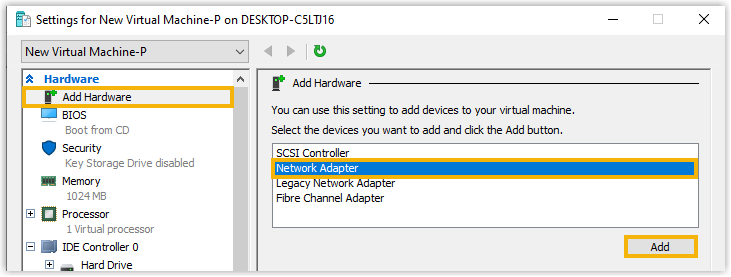
The network adapter is added successfully.
- In the Virtual switch drop-down list, select
the other virtual switch, then click Apply
and OK.
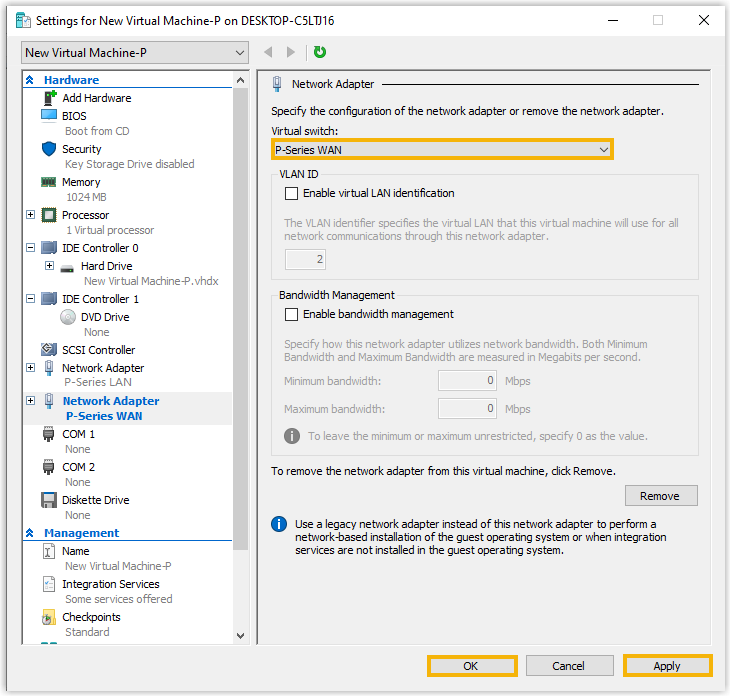
- Click Add Hardware, select Network
Adapter, then click
Add.
Step 4. Install Yeastar P-Series Software Edition on the virtual machine
- Right click the virtual machine, click Start to start
the virtual machine.
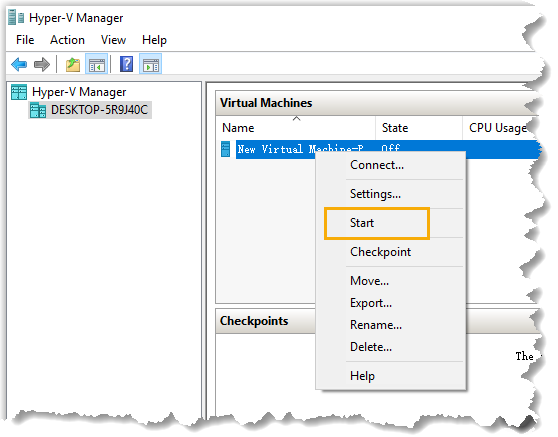
- Right click the virtual machine, click Connect to
connect to the virtual machine.

- Select Start installer, then press
Enter.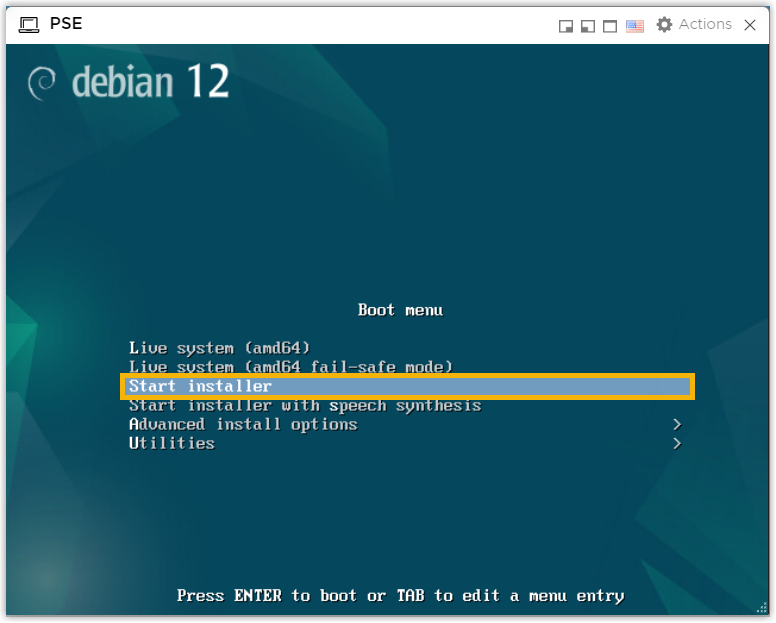
- Select localization options.
- Select a language to be used for the installation process, then
click Continue.
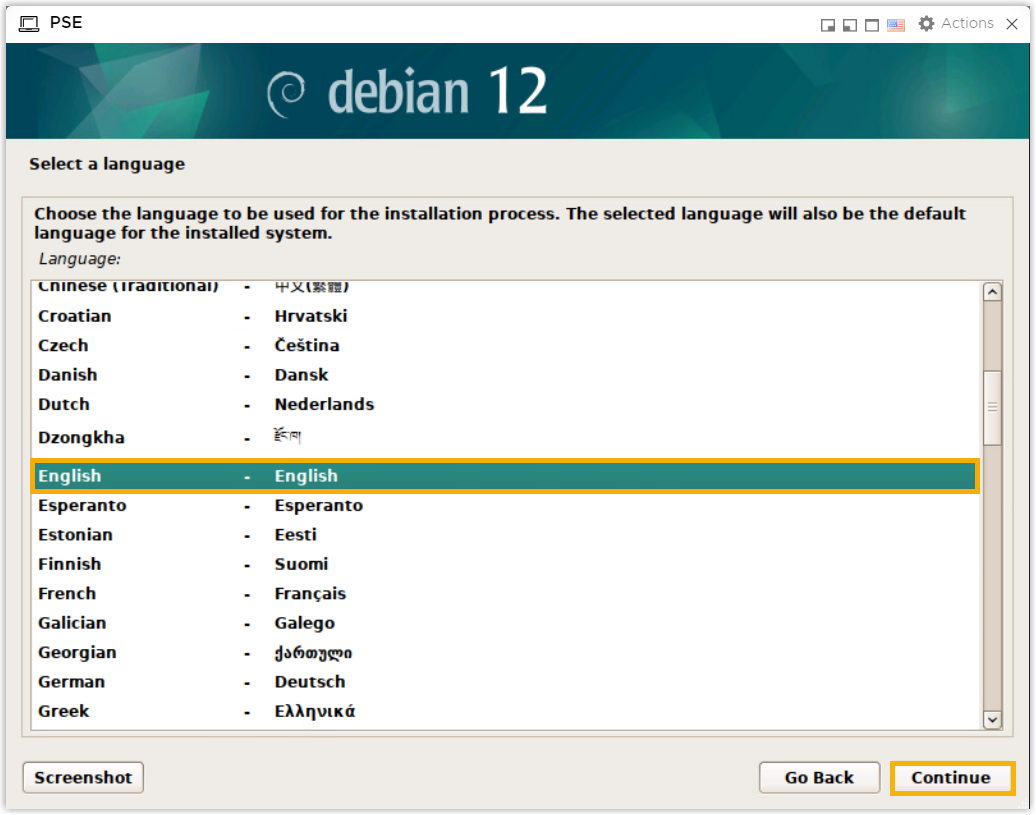
- Select a location to be used to set the correct time zone, then
click Continue.
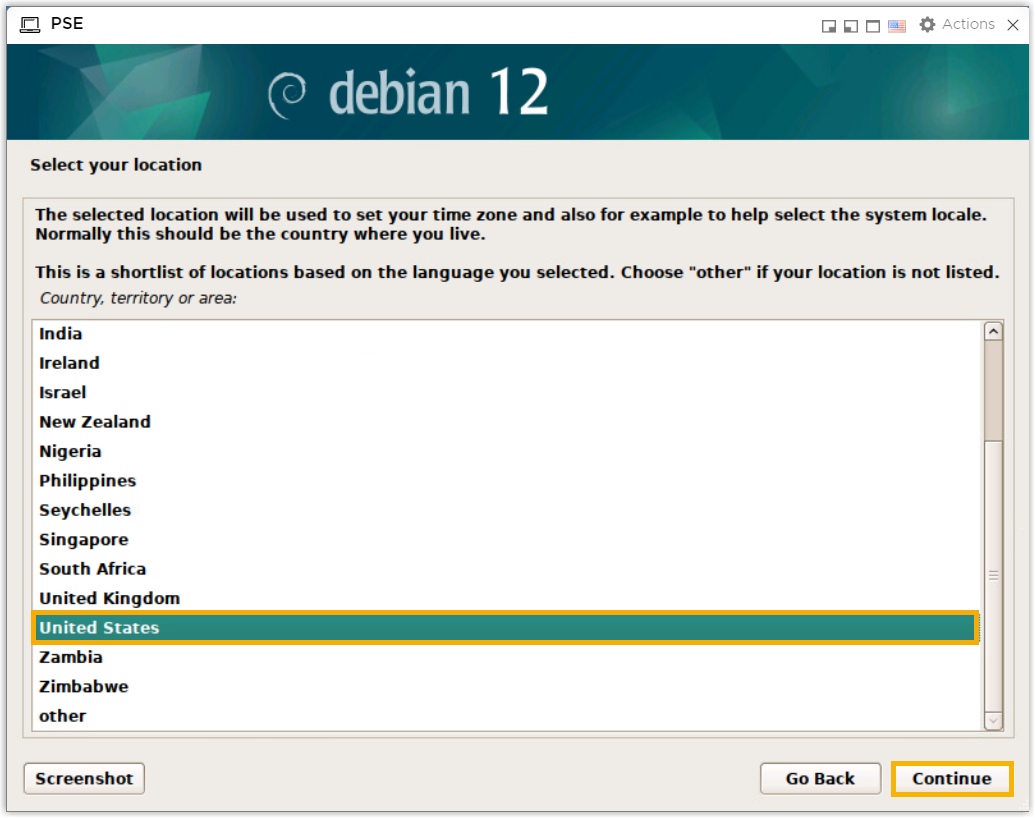
- Select a language to be used for the installation process, then
click Continue.
- Select a keyboard, then click
Continue.

- Skip network setup.Note: By default, debian-installer tries to configure your computer's network automatically as far as possible. If the automatic configuration fails, you will be asked if you want to retry, or if you want to perform a manual setup. Skip network setup as shown below.
- Select Continue.
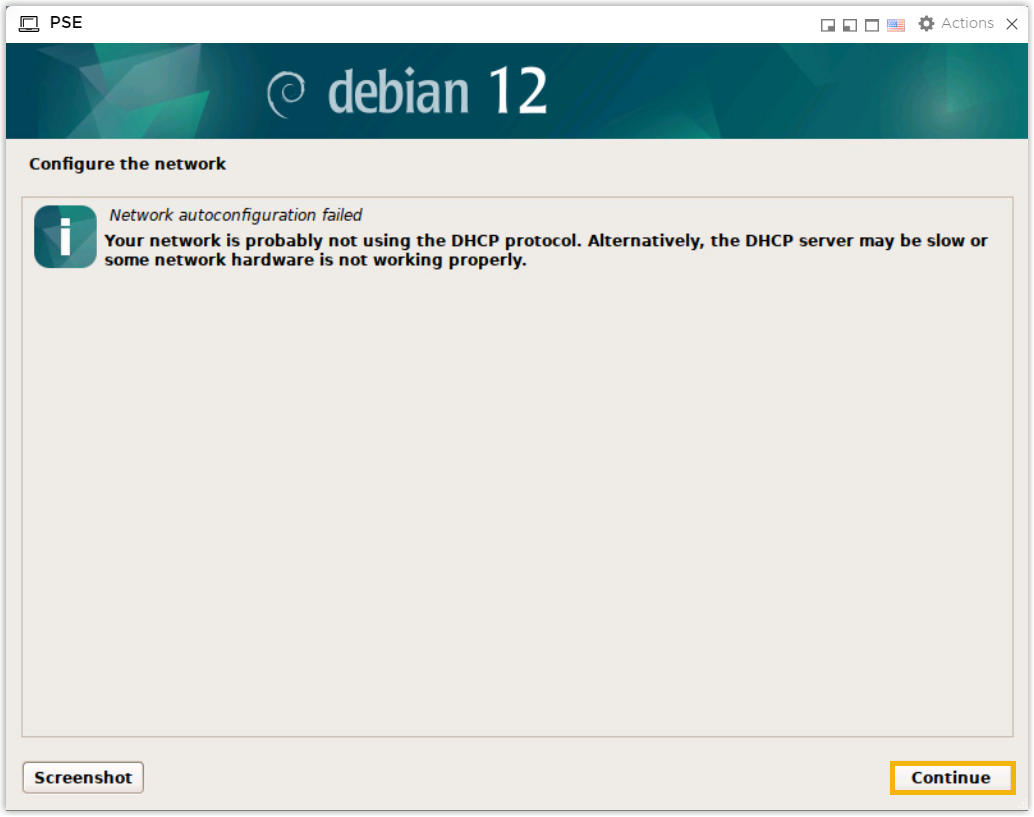
- Select Do not configure the network at this
time, then click
Continue.

- Retain the default hostname, then click
Continue.
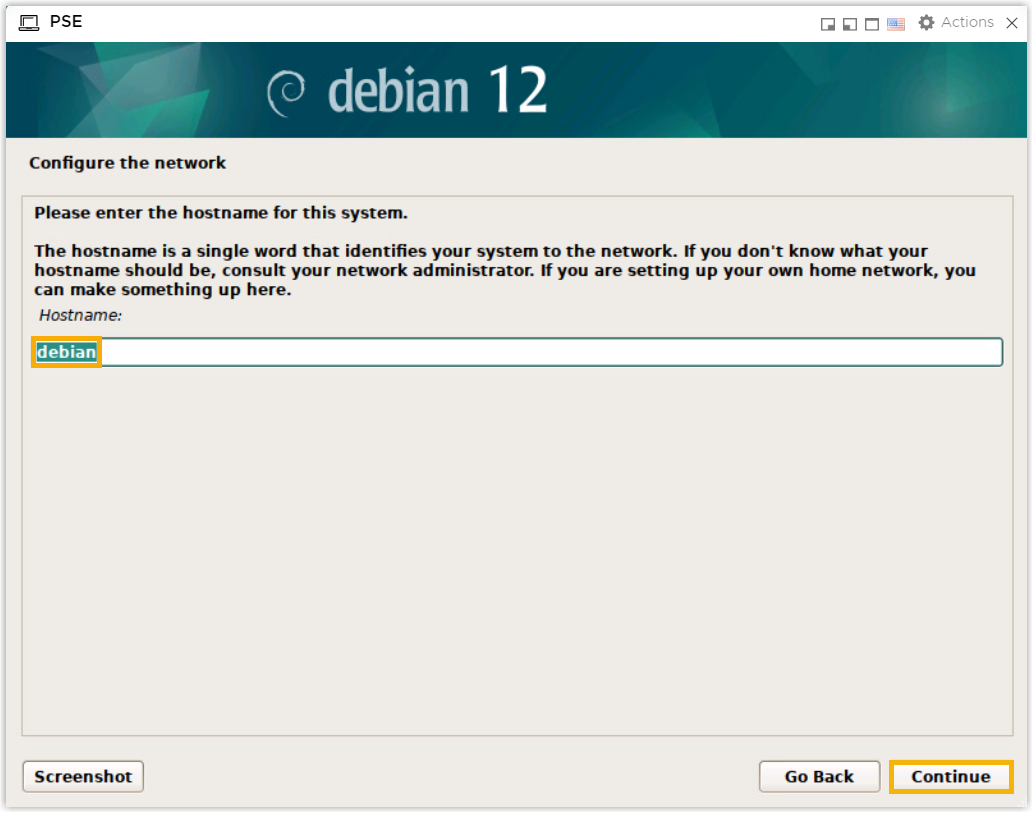
- Select Continue.
- Set up users and passwords.
- Set root password, then click
Continue.
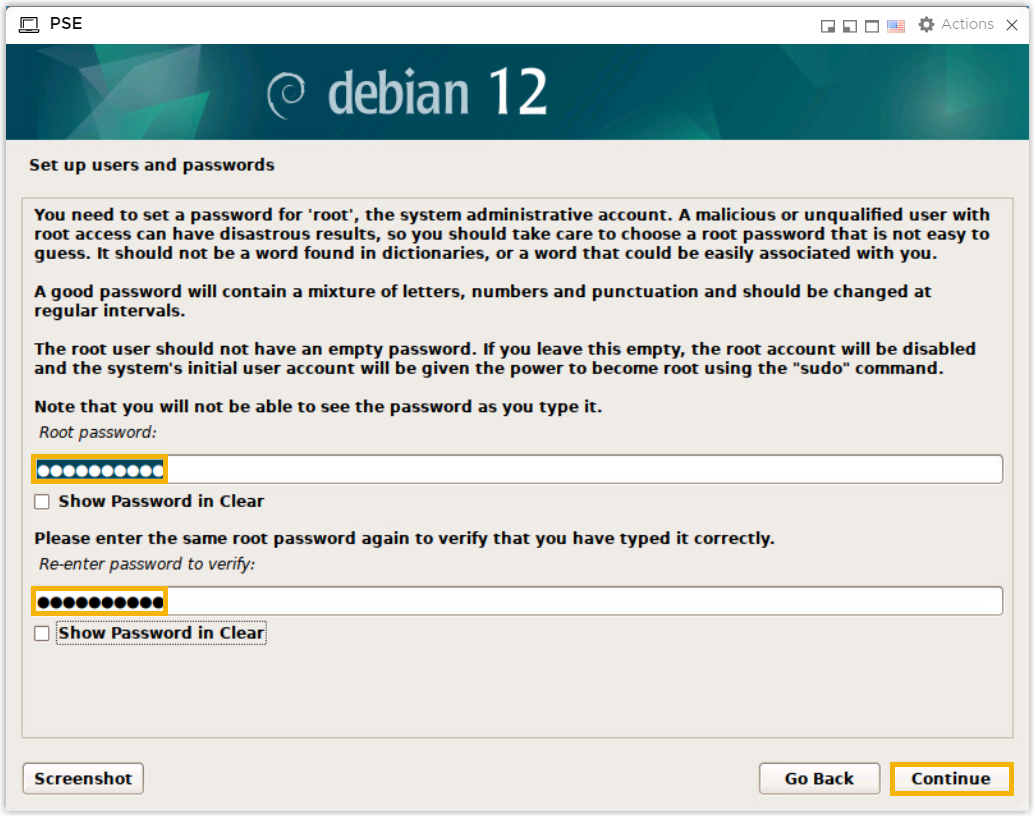
- Create an ordinary user.

- Set root password, then click
Continue.
- Configure clock and time zone, then click
Continue.
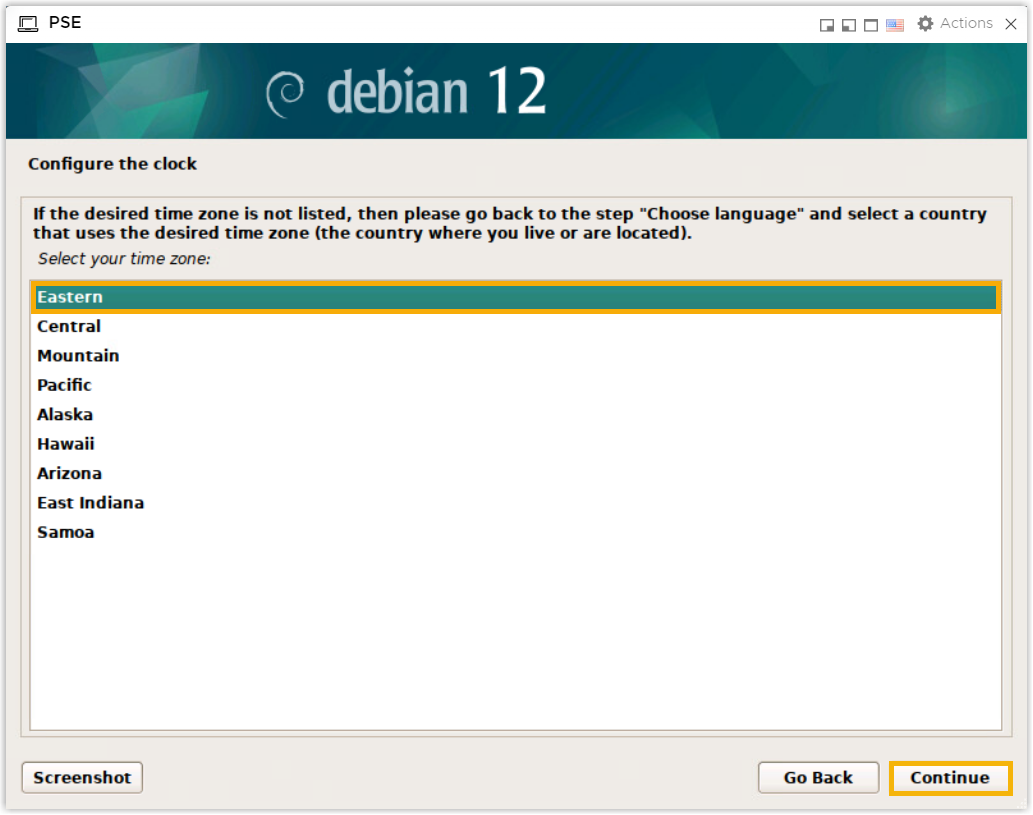
- Manually partition the disk.
- Select Manual, then click
Continue.
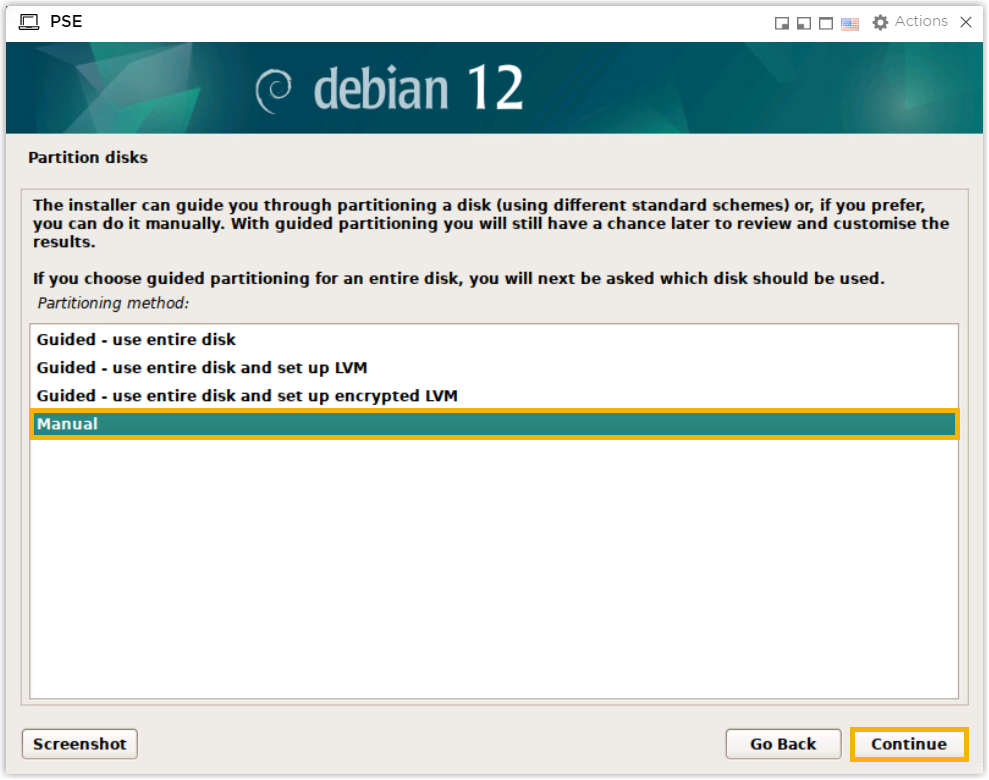
- Select the disk that you want to partition, then click
Continue.
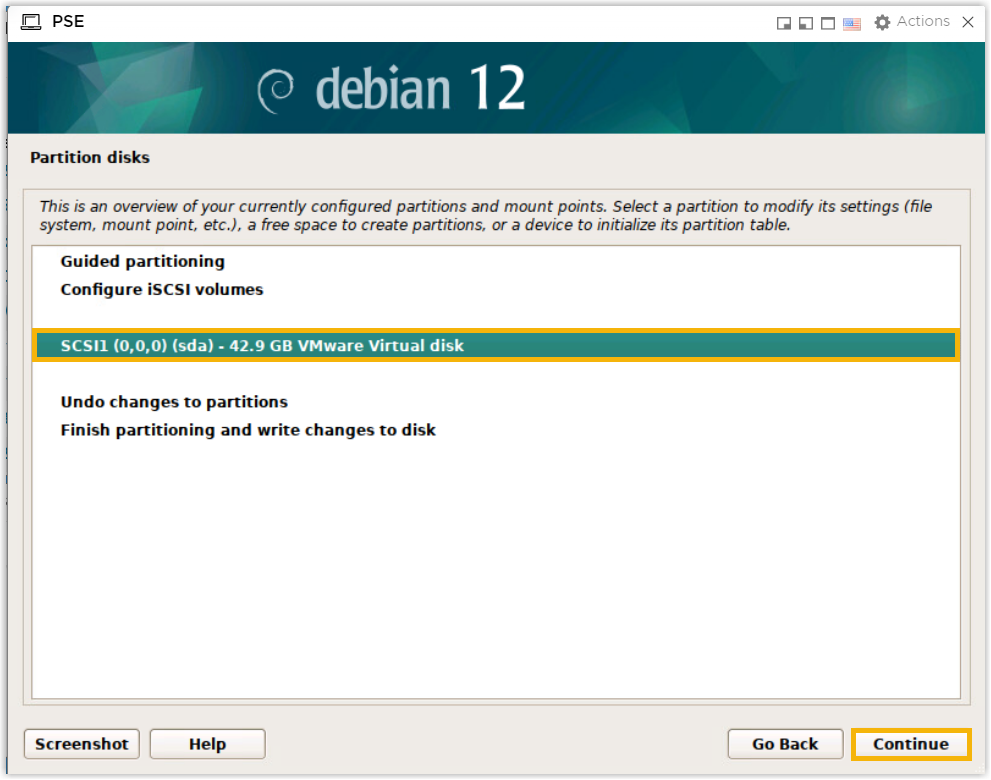
- Select Yes to create a new partition table,
then click Continue.
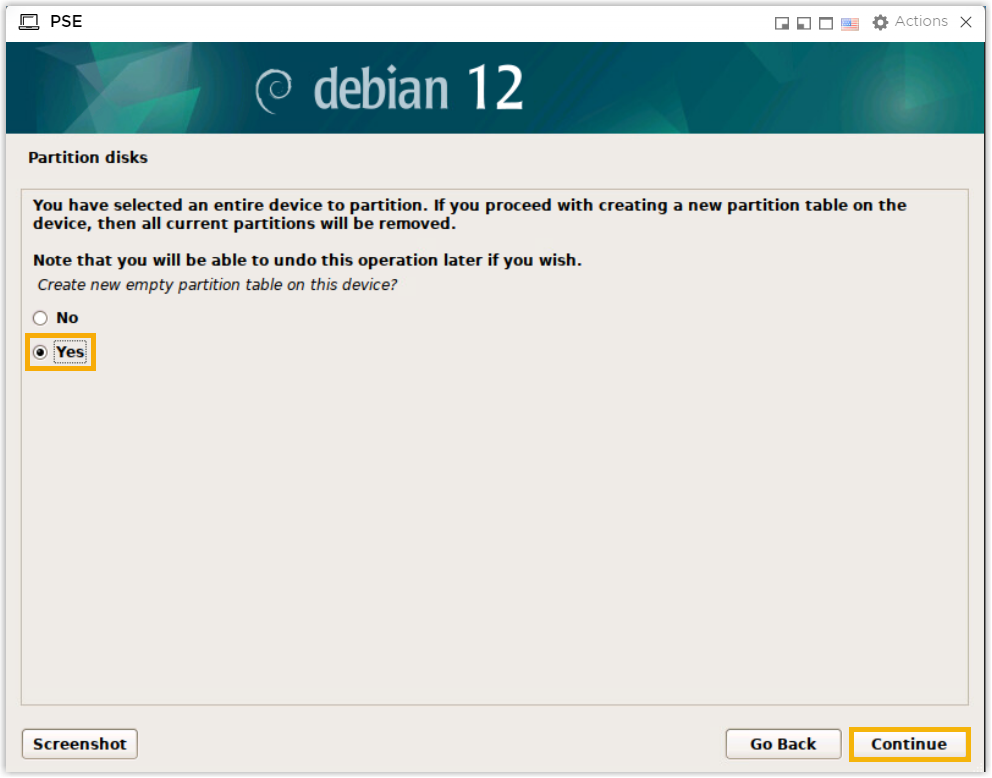
- Create the required partitions and custom partitions according to
your needs.Note: The following partitions are required.
Partition Name Description Format Recommended Partition Space /The slash /alone stands for the root of the file system tree.ex4 Minimum 10 GB /swapThis is where you extend the system memory by dedicating part of the hard drive to it. swap Minimum 10 GB /homeThis holds all the home directories for the users. ex4 Remaining Free Space after other partitions created or second drive. - Select
pri/log FREE SPACE, then create a/partition.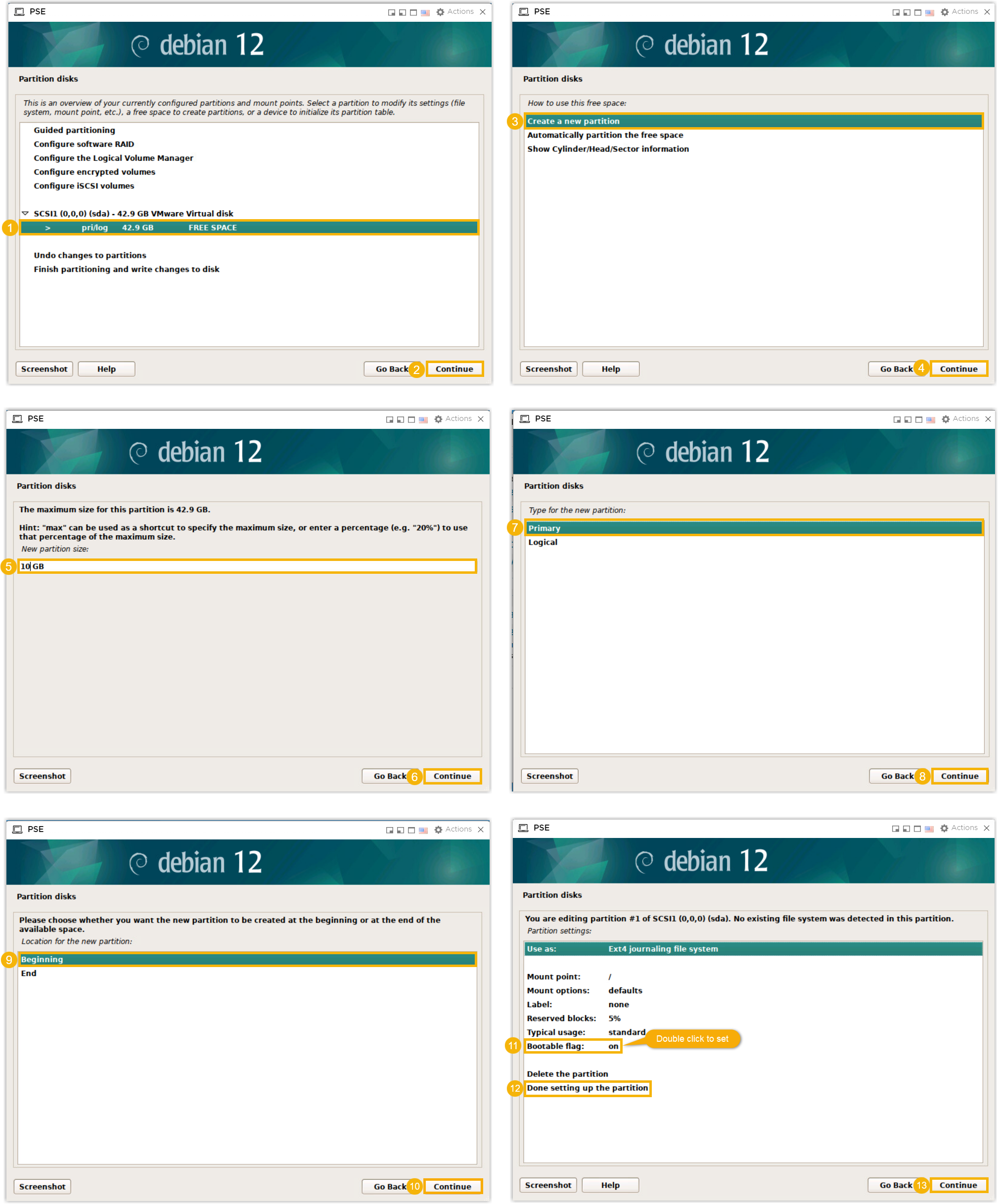
- Select
pri/log FREE SPACE, then create a/swappartition.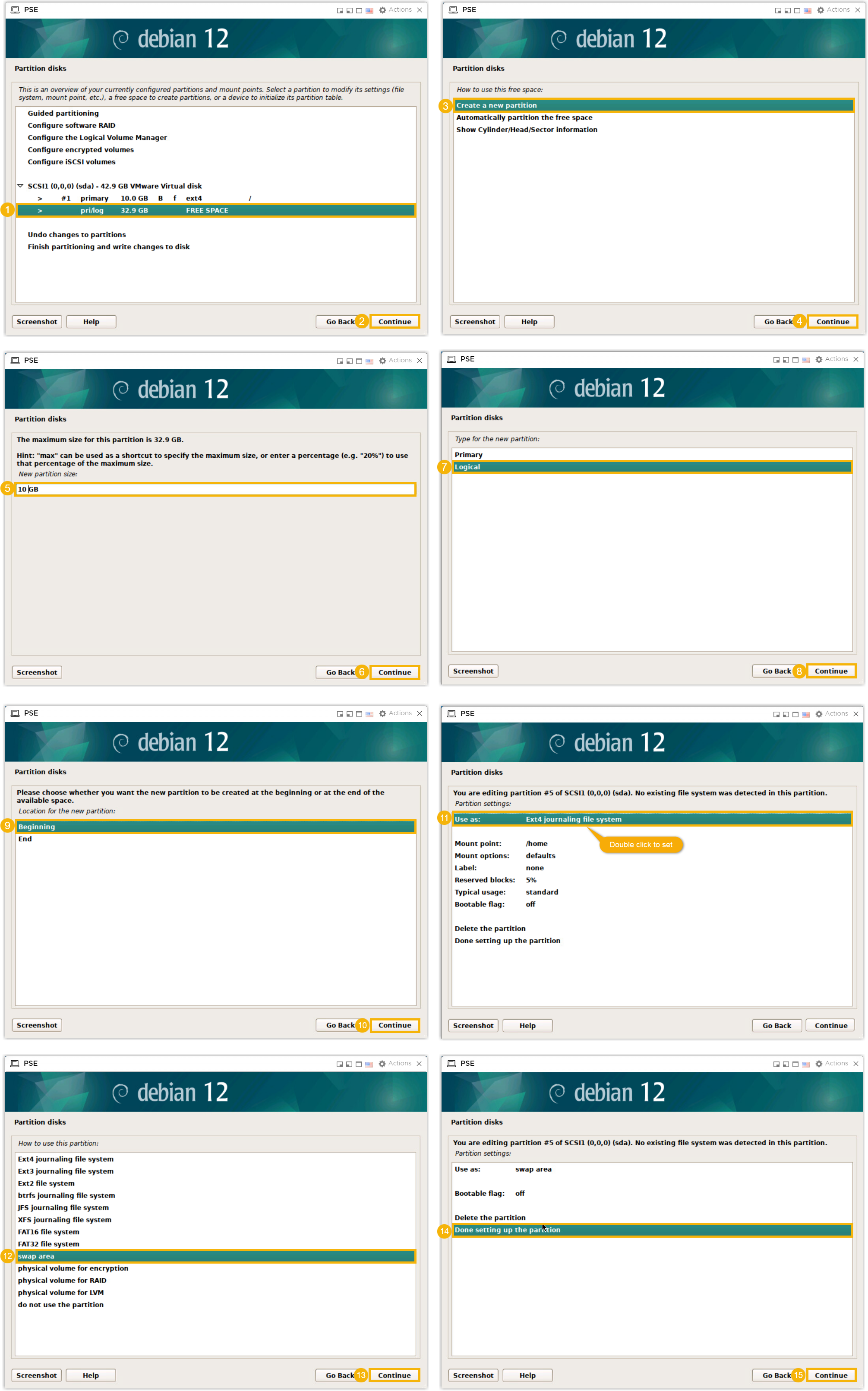
- Select
pri/log FREE SPACE, then create a/homepartition.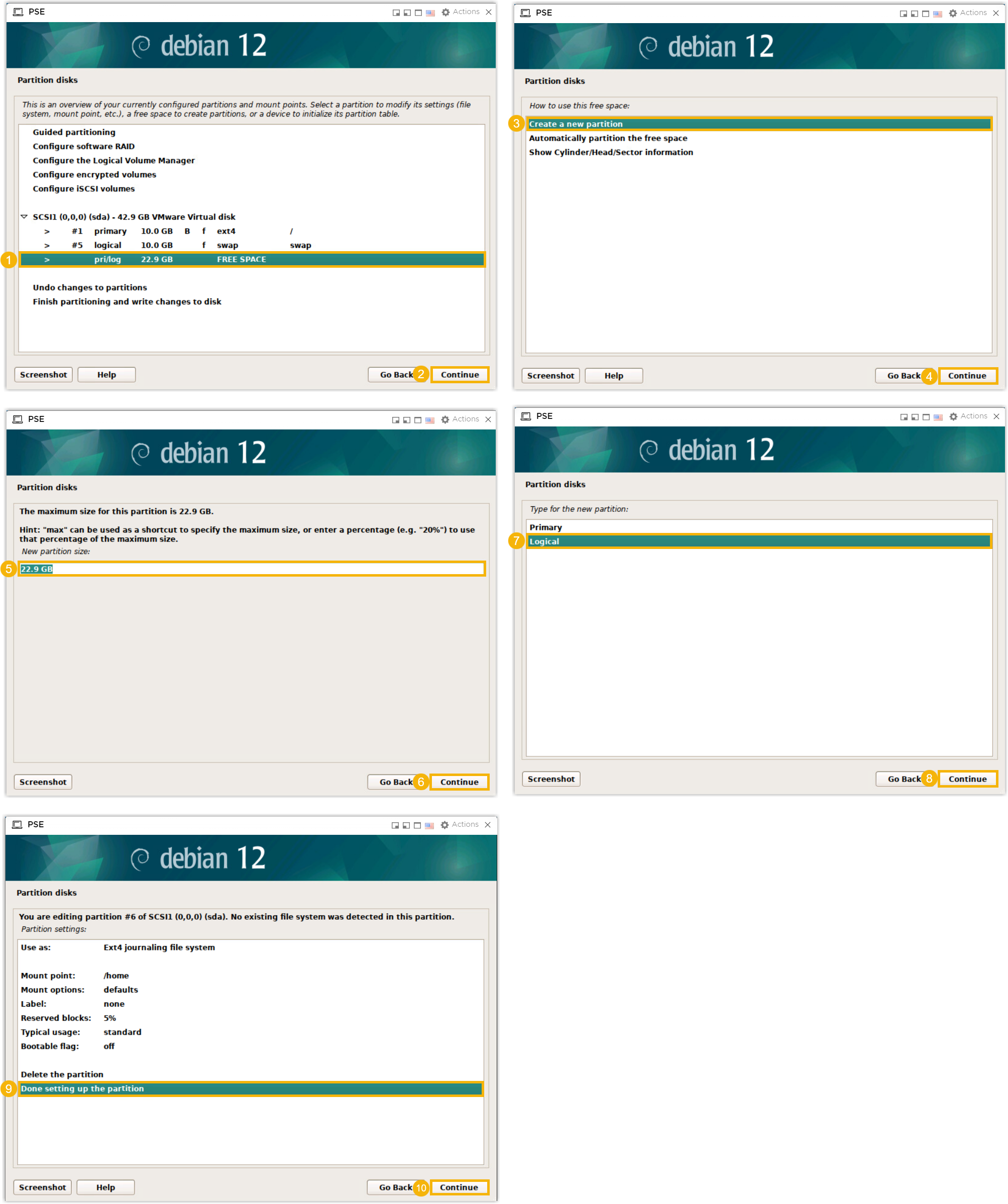
Partitions are created successfully and displayed on the list.
- Select
- Click Finish partitioning and write changes to
disk, then click
Continue.
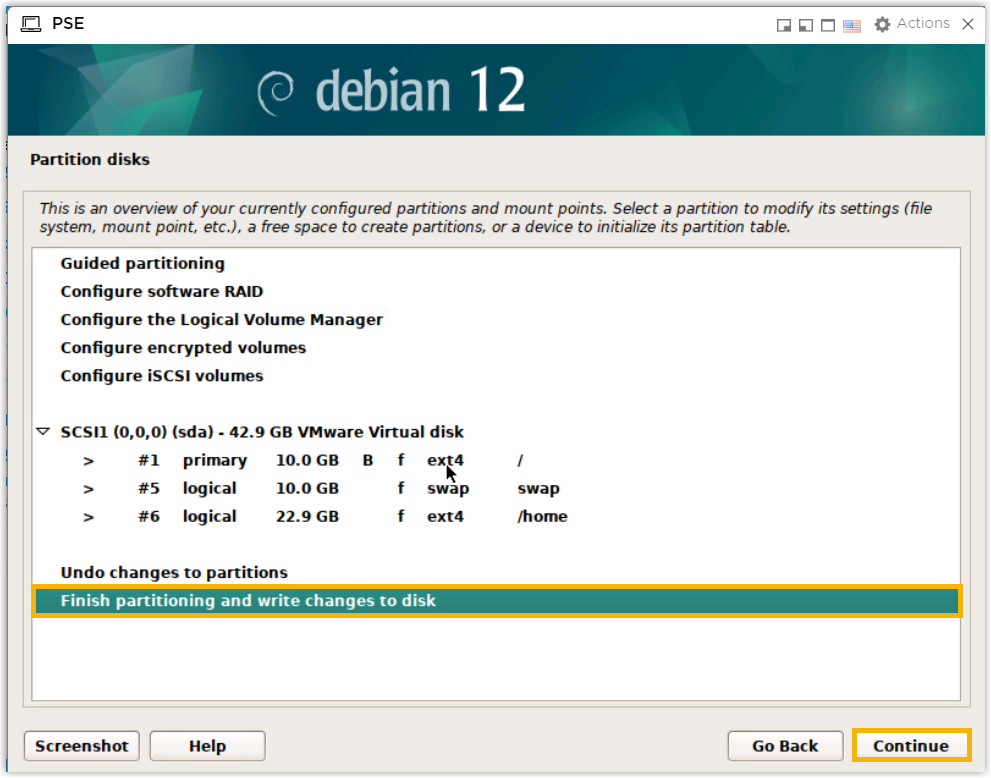
- Select Yes to write the changes to the
selected disk, then click Continue.
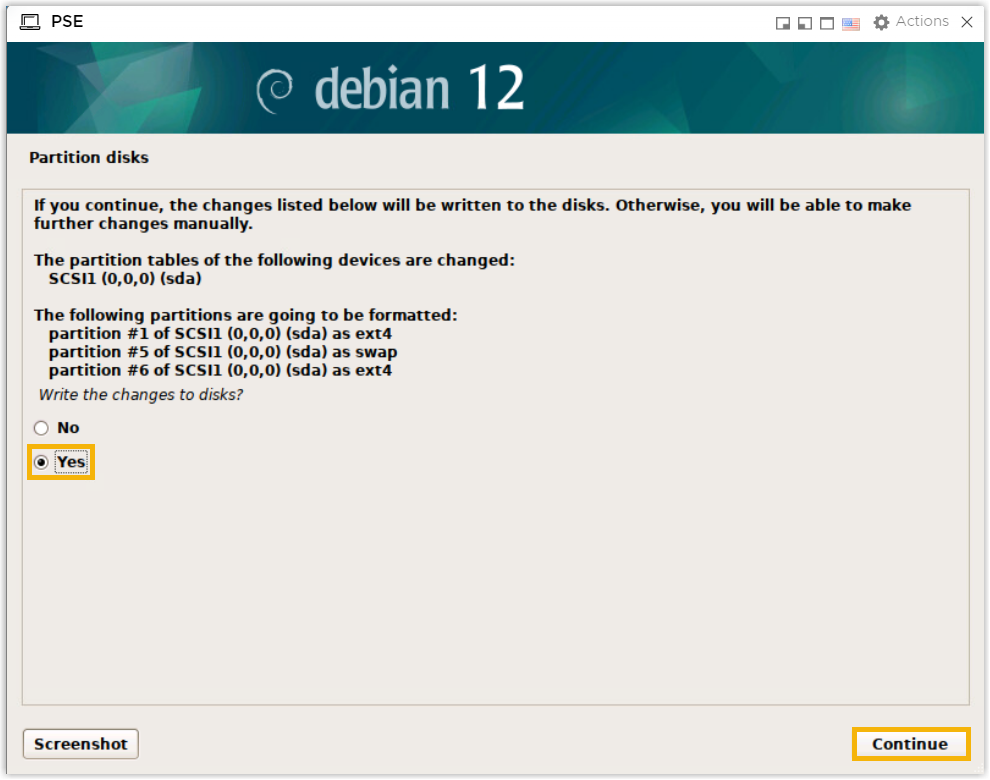
- Select Manual, then click
Continue.
- Select No to choose not to use a network
mirror, then click Continue.
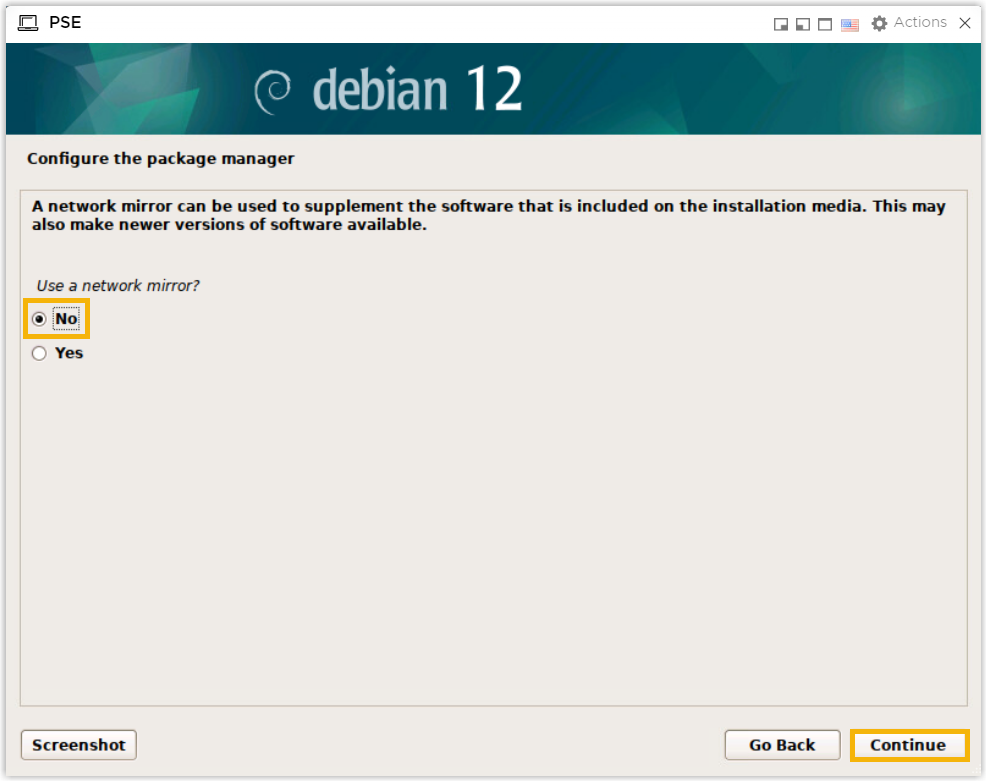
- Install the GRUB boot loader on the drive.
- Select Yes to install GRUB boot loader, then
click Continue.
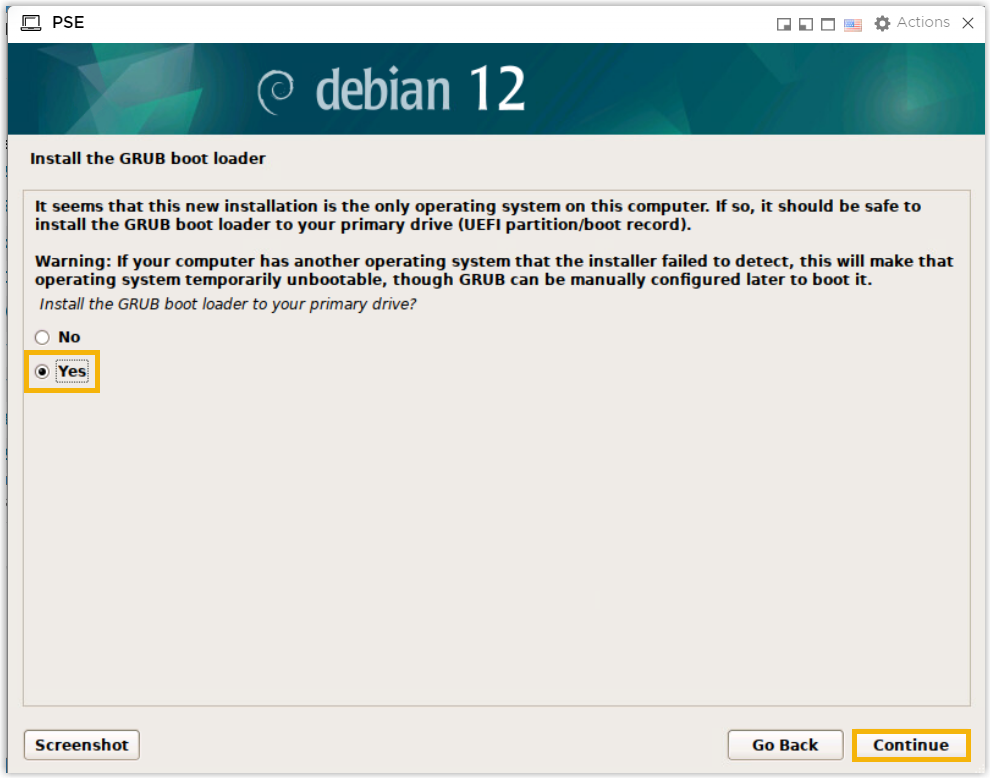
- Select a device to install GRUB boot loader, then click
Continue.

- Select Yes to install GRUB boot loader, then
click Continue.
- Click Continue to reboot the
system.
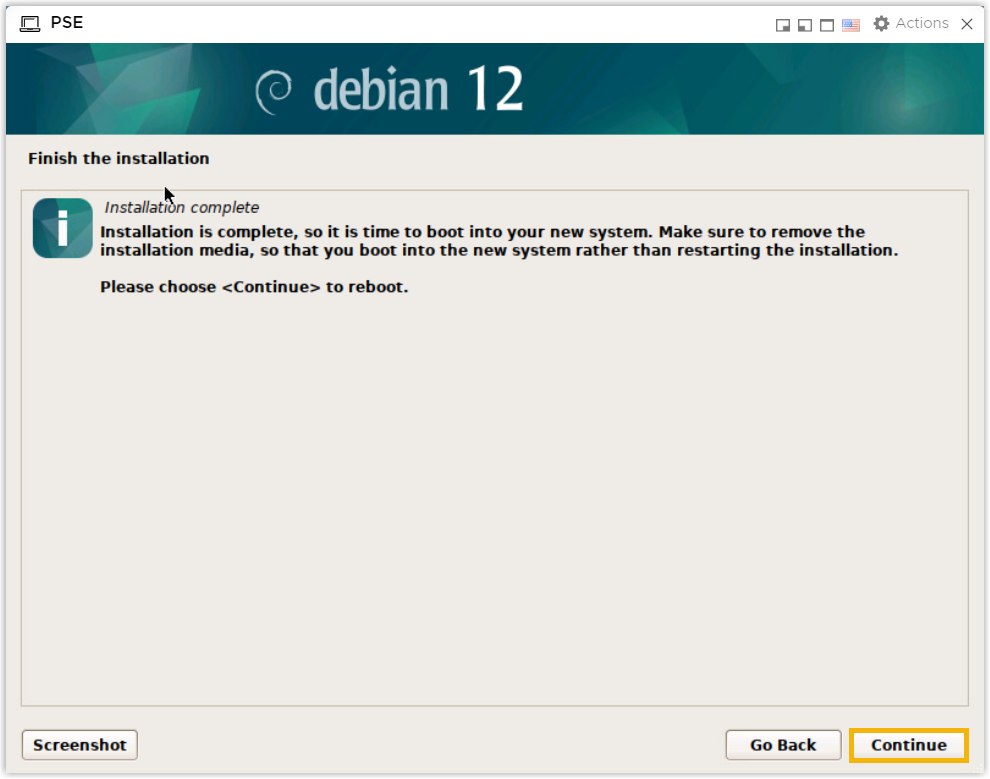
- Wait 5 to 10 minutes until the installation process is no longer
running, then press
Enter.If a
IPPBX loginprompt is displayed and no errors likewait for basicsrv run okoccur, it indicates that P-Series Software Edition is installed.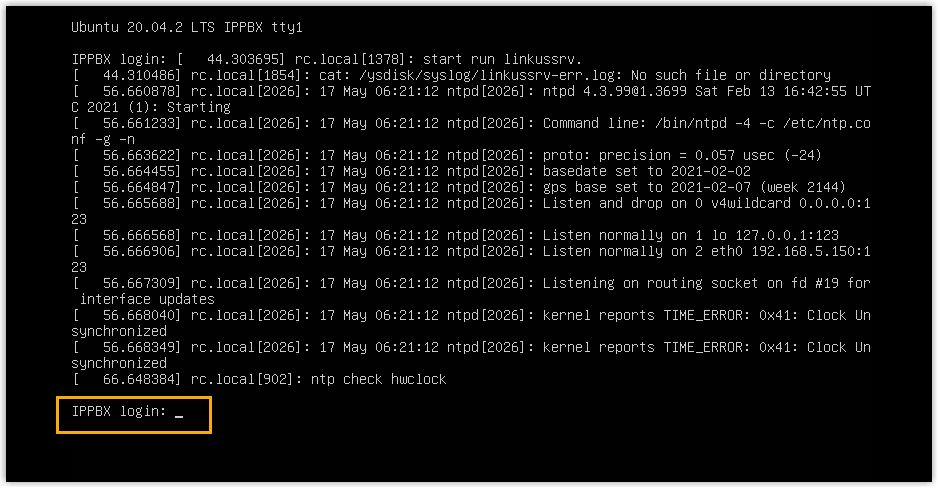
(Optional) Step 5. Change the default IP address of Yeastar P-Series Software Edition
192.168.5.150. If you prefer another IP address or your PC is
on a different network segment such as 192.168.28.X, you can change
the PBX's default IP address.We assume that your PC is on the network segment
192.168.28.X and your desired PBX IP address is
192.168.28.45. Refer to the following instructions to change
the PBX's IP address.
- At the
IPPBX loginprompt, typesupportand pressEnter.
- At the
Passwordprompt, typeloginpbx(if the PBX firmware version is 83.18.0.59 or later) orQhcyaxsGcywymg2022(if the PBX firmware version is 83.18.0.18 or earlier), and pressEnter. Note: Generally, you will NOT get any visual feedback from the screen when you type the password.
Note: Generally, you will NOT get any visual feedback from the screen when you type the password.You are presented with a prompt, displaying the Debian information and system information. In the meanwhile, you are given the option to ping an IP address, view or update current network configuration, and log out the
supportaccount. You can type a specific number to run the command of the corresponding number.
- Type
1and pressEnterto update the network configuration.
- Change the IP address of Yeastar P-Series Software Edition as
follows.
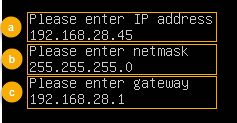
- At the
Please enter IP addressprompt, type the desired IP address and pressEnter.In this example, type
192.168.28.45. - At the
Please enter netmaskprompt, type the subnet mask and pressEnter.In this example, type
255.255.255.0. - At the
Please enter gatewayprompt, type the gateway address and pressEnter.In this example, type
192.168.28.1.It takes about two minutes to change the PBX's IP address from
192.168.5.150to your desired IP address.
- At the
Result
Yeastar P-Series Software Edition is installed successfully.
What to do next
Activate and set up Yeastar P-Series Software Edition to make it ready for use. You can do this using one of the following methods:
- Complete setup via Web GUI using the installation wizard
-
- Open a web browser, enter the PBX's IP address and port
in the address bar (e.g.
https://192.168.28.45:8088), and
press
Enter.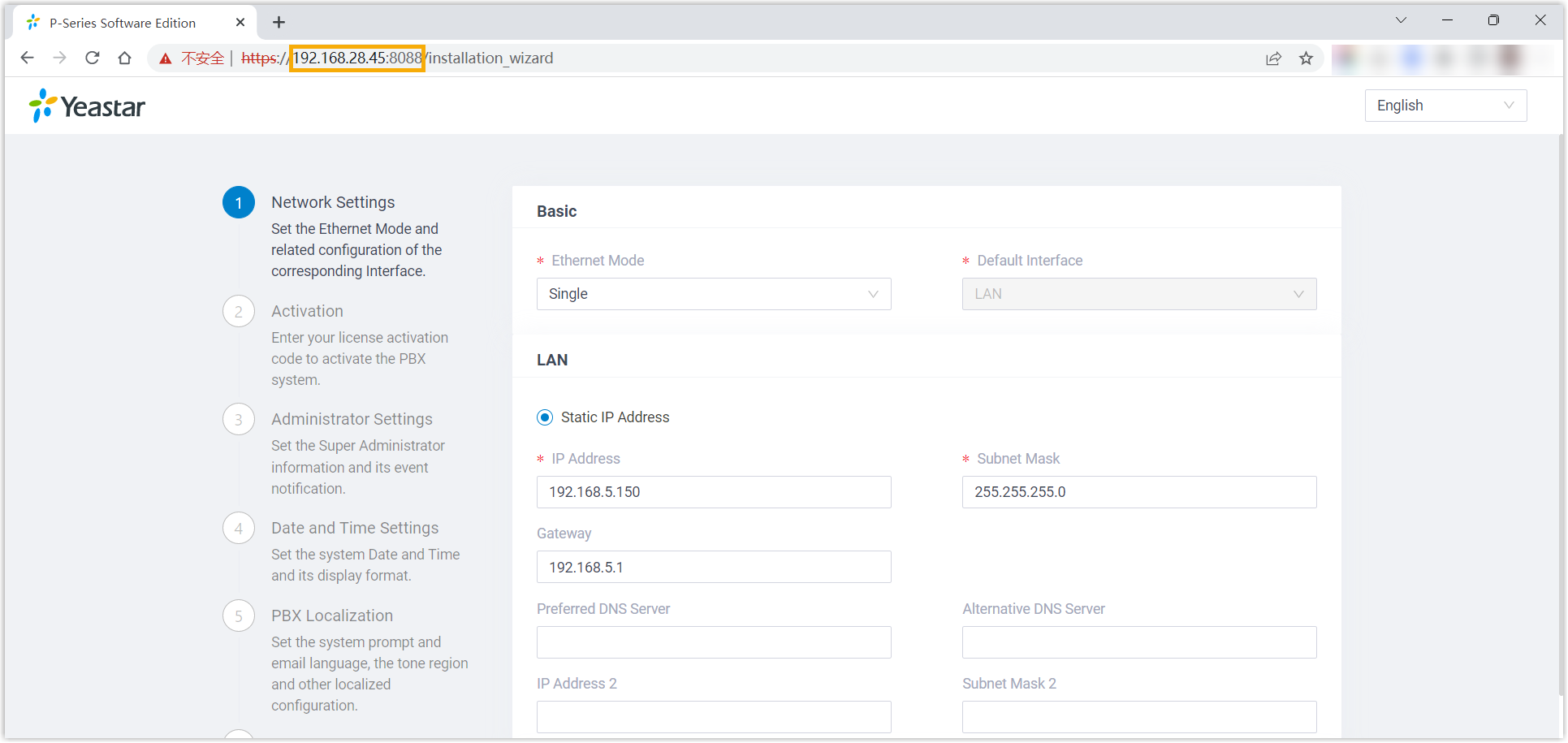
- Activate and initially set up Yeastar P-Series Software Edition following the installation wizard.
- Open a web browser, enter the PBX's IP address and port
in the address bar (e.g.
https://192.168.28.45:8088), and
press
- Complete setup via SSH using a prepared XML file
Upload a prepared XML file to the PBX via SSH. This method allows you to complete the initial setup and apply additional supported PBX settings, such as creating extensions, trunks, inbound routes, and more.
- Download the XML configuration file and edit it as needed.
- Upload the XML configuration file to the designated directory and reboot the PBX to take effect.
For more information, see Activate and Set up Yeastar P-Series Software Edition Using XML Configuration File.
- Root Account: Username is
root, and password is the credential configured in XML configuration file.
- Support Account: Username is
support, and password is the credential configured in PBX web portal (Path: ) or in XML configuration file.Figure 1. Support password in PBX web portal 
Figure 2. Support password in XML configuration file 
- Custom Account: Username and password are the credentials configured during installation process.